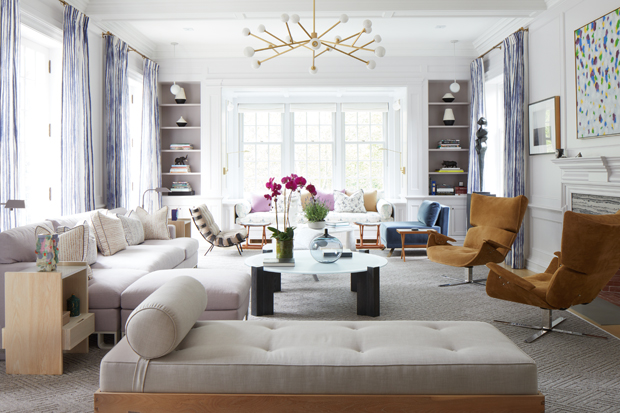
Quoted from The Healthy Home Economist, a study in 1932 stated that color doesn’t really have to be visible to have an effect. The emission of a light wave that has a color can directly affect the endocrine system in the body. That is why, the choice of room color – the color of the house – has a direct effect on the health system, both physically and mentally.
A comfortable and calming home atmosphere can be obtained by paying attention to one of the interior design elements, namely color. The claim that a color can have an effect on mood, affect character, and impact mental health is true.
Believe it or not, the choice of room color seems to have a direct effect on the health system, both physically and mentally.
Quoted from The Healthy Home Economist, a study in 1932 stated that color doesn’t really have to be visible to have an effect. The emission of a light wave that has a color can directly affect the endocrine system in the body.
When it comes to interior design, the quote above shows that the choice of color can have a direct effect on the mood and character of a room. This also affects our daily activities in the room.
Travis Neighbor Ward, a novelist as well as an editor and writer on interior issues, traveling, gardening, etc., wrote something interesting. He states that if one day we wake up feeling dispirited and exhausted, it’s not because of lack of sleep. The problem lies in the color of the room around us which affects the nature that is aware of us and drains energy.
Color Has Psychological Effects
On the other hand, research conducted by Prof. Harold Wohlfarth, President of The German Academy of Color Science and a Photobiologist at the University of Alberta. He came to the conclusion that color must have a direct psychological effect.
Quoted from The New York Times, Prof. Harold Wohlfarth conducted research by changing the walls of a school room from orange and white to light blue. The result, according to teachers and independent observers, the average systolic blood pressure of the students fell by 120-100, or nearly 17 percent. Children also behave better, are more attentive, and become less restless or aggressive. However, when the room was returned to its original color, the students again became noisy and tended to be aggressive.
To get the right color choice and blend, it’s a good idea to pay attention to several things. Because the choice of color is very impact on everything, especially your own health.
Quoted by The Healthy Home Economist, Dr. Hazel Parcell, a well-known nutrition and health expert, provides guidance and recommendations in choosing room colors in her book.
Black as Home Color
Black can be thought of as the absence of a color and the absence of energy. According to Dr. Hazel Parcell, it is better to choose and use colors that can stimulate the body such as yellow, magenta, purple, or even red.
Houses in Pink, Blue, and Other Pastel Colors
According to Dr. Hazel, this color choice is perfect for the bedroom. This color is quite calming and able to provide a relaxed atmosphere as part of the relaxation needed by the body. Pastel colors and neutrals are also great for bed sheets or pillows.
White as Home Color
White is always an acceptable color, especially if used in the kitchen area. When combined with a sufficient spectrum of lighting, white will create a good atmosphere. Dr. Parcells also recommends pastel colors to add atmosphere and creative energy to the kitchen.
Yellow House
Yellow is the best paint color choice for the bathroom. This color will provide energy, stimulate the intestinal tract, and can even reduce constipation.
Orange Color Shades
The orange color seems to be able to stimulate oxygenization and normalize the body’s metabolism.
Indigo Colored Room (Blue & Purple)
Indigo colors, namely blue and purple, are the right colors for the bedroom. This color is suitable for insomniacs.
Red as Room Color
This color is recommended for you to avoid, especially if you intend to apply it to a child’s bedroom. This is because the red color is considered too stimulating. Red curtains, accessories, or other decorations in the room can interfere with a child’s sleep pattern at night.
Dr. Parcells successfully conducted various experiments when it came to normalizing children’s bedrooms by providing soothing pastel colors. We recommend that the choice of red is applied to a room that requires more energy.
That is the impression given by each color that is applied to your room. Make sure the color selection is in accordance with the intended use of the room.